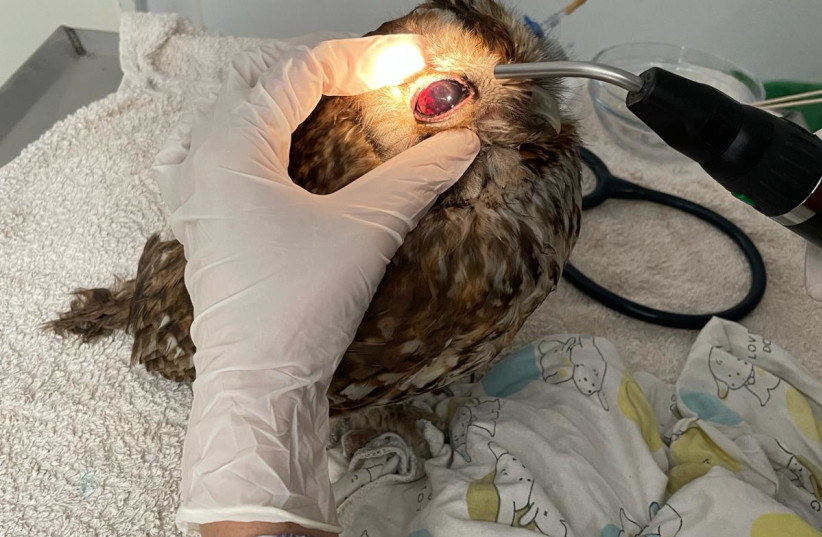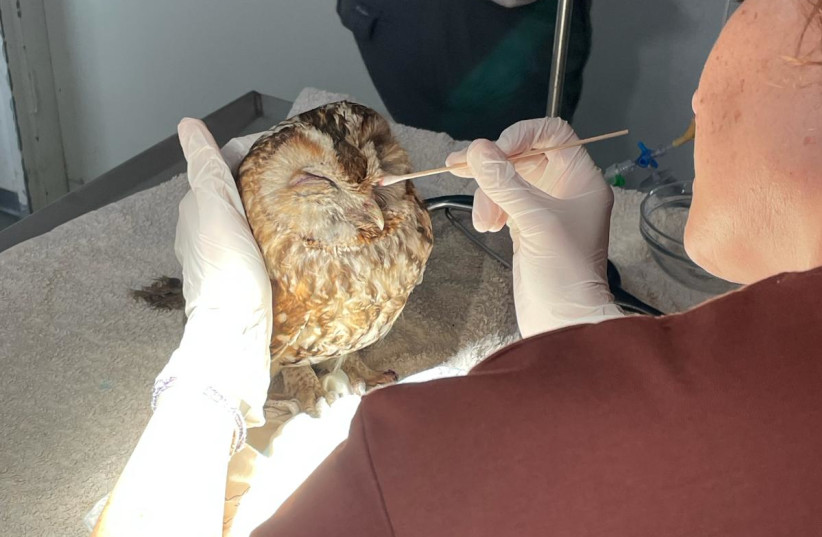At the beginning of March, an owl was found injured on the road in the evacuated She’ar Yashuv; according to the Keren Kayemeth LeIsrael-Jewish National Fund (KKL-JNF), the owl was transferred to specialized vets for recovery.
The owl was discovered by the side of the road injured, mostly likely from a passing vehicle.
The discoverer of the injured owl contacted Dr. Rami Perlstein, a veterinarian in Kiryat Shmona, who contacted Dr. Rona Nadler-Valency, director of the Agamon Wildlife Rehabilitation Center (AWRC).
Dr. Nadler-Valency traveled from her temporary home in the Jordan Valley (after she was evacuated) to pick the owl up from Kiriyat Shmona.
"I arrived in the city after not being there for a few months. It's really sad to see everything abandoned, and of course, it's not pleasant to collect animals under shelling."

After arriving at the clinic, the owl underwent comprehensive examinations and was found to have a head injury and an injury to its right eye.
Long-term recovery
For about a month, the owl received dedicated care around the clock, which included fluid support, pain relief, and targeted treatment for the head trauma and the eye injury.
After an improvement in her condition finishing the medical treatment, the owl was transferred to a large acclimated cage, where she could fly and hunt.

The team monitored her with remote cameras, and after it seemed that she was able to hunt independently for several days, a "soft release" was decided on.
A window was opened in the acclimate cage, from which she could fly freely.
Dr. Rona Nadler-Valency said "Towards evening, the release window opened, and since then, the team has been following the night owl using a small transmitter attached to its back. This will allow us to monitor and see that it is indeed doing well in the wild and to learn more about survival with this type of injury. We are happy to know that she is able to survive and eat."
Inbar Shlomit-Rubin, field manager at the center, said, "Night owls are a unique night time predator. They are common nesters in the North of the country, and Israel is the southern limit of their distribution. The nocturnal creatures are hard to see, but their loud calls cannot be missed. The Hula Reeds are a central and critical habitat for wildlife and hundreds of thousands of migratory and stable birds."
If you find an injured wild animal, dial *3639 to reach the wildlife center.
